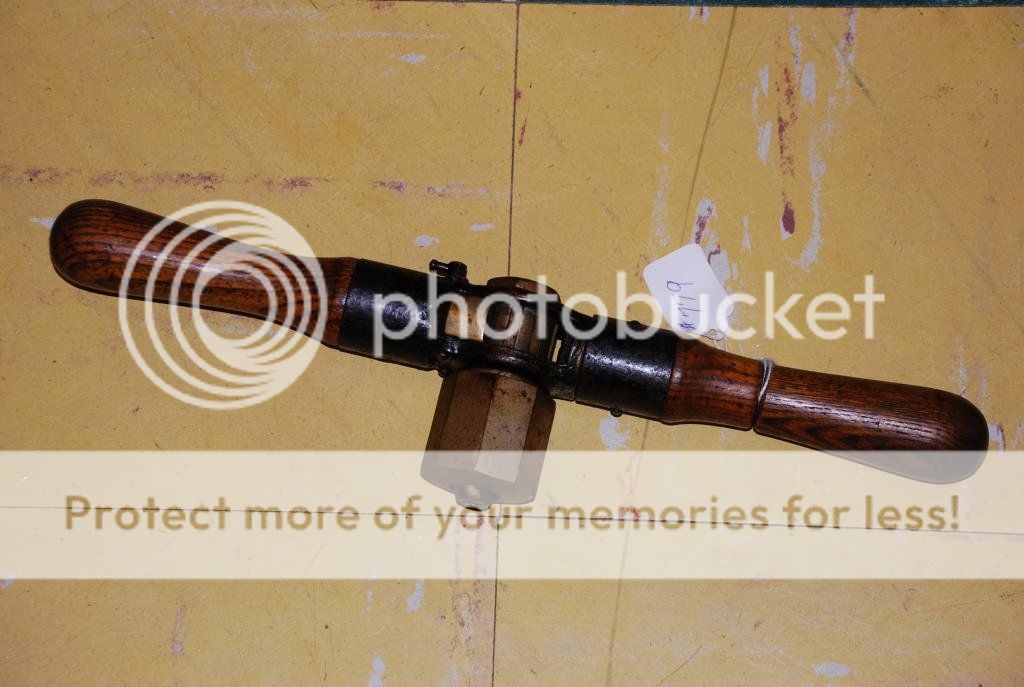- Joined
- Mar 10, 2011
- Messages
- 2,689
I'm about to crash, so no pics.
. . .
Did a search and found this pic:

I didn't know about ratcheting augers. Always like learning about old tools. Thanks for posting. Here is some more info:
"T-augers
The Millers Falls Companys 1897 catalog is notable for its four T-auger handlestwo of them labeled as Pratts, one Rogerss and another Gunns.(3) The T-auger handles used by most workmen were simple tools, being little more than a stick with a square hole in the center for holding the bit. In the hands of a burly workman, the device is surprisingly effective with its biggest drawback being that the hands are repositioned at least twice during each during each rotation of the tool. A worker could easily overcome this difficulty by choosing one of the companys high-end, ratcheting models (the Gunn model or one of the Pratts). The ratcheting auger handles also made provision for a user finding himself in a situation with inadequate clearance for a full rotation. An arm needed only to be detached and screwed into an opening at the handles top to convert the tool into an oversized, ratcheting corner brace. The advent of the more sophisticated boring machines did not, as one might expect, sound a death knell for the traditional T-auger. The T-augers easy portability, its flexibility in a variety of work situations and its modest cost were factors ensuring continuing popularity. Pratts auger handle no. 4 was considered the top of the line and cost dealers a mere $24.00 per dozen. The cheapest model, the non-ratcheting Pratt, cost fifty cents each if purchased in similar quantities."
From: http://oldtoolheaven.com/history/history5.htm






